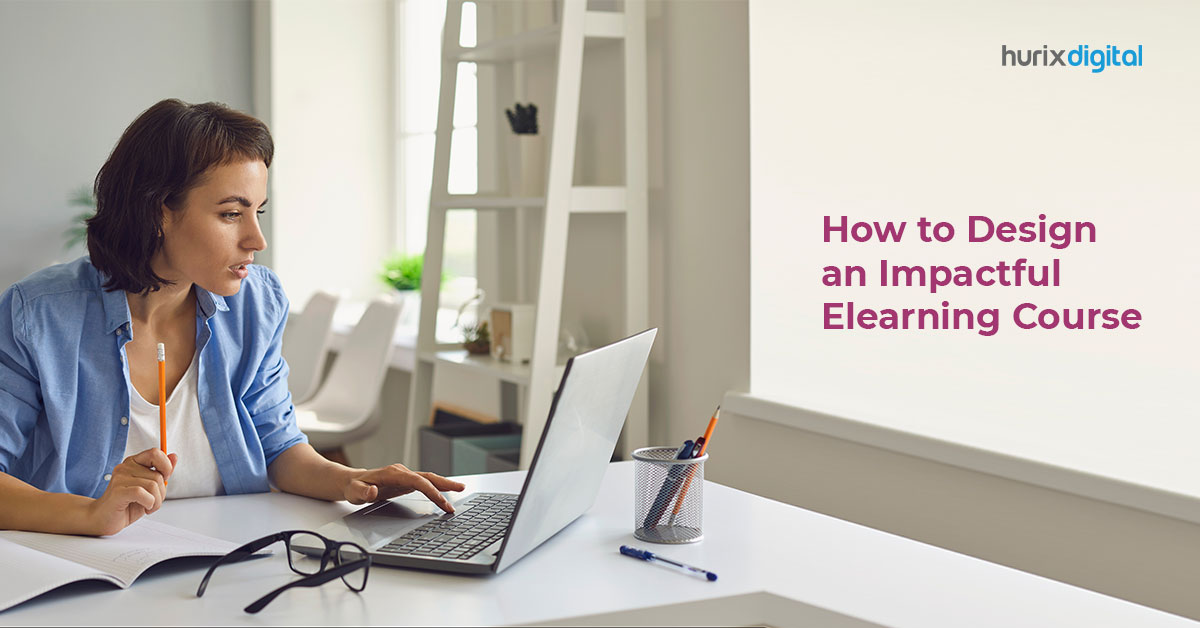
How to Design an Impactful Elearning Course
With the rise of technology, e-learning in education has become a reality that’s changing how people acquire knowledge and skills. They are no longer limited by location or time constraints to pursue their interests or goals.
Designing an e-learning course can be complex and challenging, but it is also a rewarding experience that can help you make a real impact in people’s lives.
Whether you’re creating a course for your employees, students, or customers, the key to success is understanding your audience and their needs and developing a course that is engaging, informative, and interactive.
Below are ten tips to help you design an impactful e-learning course:
1. Define Your Objectives and Target Audience
Before you start designing your e-learning course, you must clearly understand what you want to achieve and who your target audience is.
Ask yourself, “What do I want my learners to know or be able to do after they complete this course?” and “Who are my learners, and what do they need from this course?”
Having a clear understanding of your objectives and target audience will help you design a course that is relevant, engaging, and effective.
2. Choose the Right Format
There are many different formats that you can use to design your e-learning course, including video lectures, interactive presentations, quizzes, and simulations.
For best results, consider your target audience and their learning style when choosing the format for your course.
For example, if you’re targeting visual learners, you may want to include more videos and images in your course, while if you’re targeting auditory learners, you may want to focus on audio recordings and podcasts.
3. Make It Interactive
One big advantage of e-learning in education is that it allows learners to interact with the course material in new and innovative ways. This is a good opportunity to create a course that is not only informative but also engaging and interactive.
Consider using quizzes, games, and simulations to make the course more interactive and to help learners apply what they’ve learned.
Gamification, for instance, is known to boost productivity by 50%.
4. Use Multimedia Effectively
Multimedia, such as videos, images, and audio recordings, can be a powerful tool to help learners understand and retain information. However, it’s important to use multimedia effectively and avoid overwhelming learners with too much information at once.
Consider breaking up your course into short, easily digestible sections and using multimedia to reinforce key concepts and ideas. Also known as microlearning, these bite-sized content pieces make learning 17% more effective compared to traditional learning.
5. Make It Accessible
Inclusivity is important in e-learning, so it’s essential to make sure that your course is accessible to all learners, regardless of their abilities.
Consider using closed captioning for videos, providing transcripts for audio recordings, and using descriptive text for images. This will help learners with disabilities access your course and benefit those who prefer to read along or are learning in a noisy environment.
6. Encourage Collaboration and Community
E-learning in education is a great opportunity to create a sense of community among learners. Encourage collaboration by using forums, discussion boards, and other tools to allow learners to connect and share their experiences.
This can help learners feel more motivated and engaged and provide opportunities for peer-to-peer learning.
7. Provide Regular Feedback and Assessment
Providing regular feedback and assessment is an important part of any e-learning course. This will help learners track their progress, understand what they’re doing well, and identify areas where they need to improve.
Consider using quizzes, tests, and other forms of assessment to help learners evaluate their understanding of the material and provide regular feedback to help them stay on track.
8. Make It Mobile-Friendly
According to recent estimates, there are over 6 billion smartphone users worldwide. With the growing use of mobile devices, it’s important to make sure that your e-learning course is accessible on a range of devices, including smartphones and tablets.
This will help learners access your course from anywhere, at any time, and will also make it easier for them to fit learning into their busy schedules.
Use a responsive design that automatically adjusts the layout of your course to fit the screen size of the device being used. This will ensure that your course is easy to use and navigate, regardless of the device being used.
9. Make It Visually Appealing
A visually appealing course is more likely to engage learners and keep them motivated.
Listed below are some tips to make your e-learning course visually attractive.
- Use appealing colors: Use colors that are easy on the eyes and create a visually appealing environment. Avoid using too many colors; it can be overwhelming and make the content difficult to read.
- Use high-quality images: Visual aids like images and videos can help break up large blocks of text and make the content more engaging. Make sure to use high-quality images that are relevant to the topic.
- Choose the right font: The font you use can greatly impact the readability of your content. Choose a font that is easy to read, both on-screen and when printed.
- Make use of white space: Don’t overcrowd the page with too much information. Make use of white space to give the eyes a break and make the content easier to digest.
- Use intuitive navigation: Make it easy for learners to navigate through the course. Use clear headings, bullet points, and numbered lists to help break up the content.
10. Continuously Evaluate and Improve
Designing an impactful e-learning course is an ongoing process, and it’s important to evaluate and improve your course over time continuously.
Consider using analytics tools to track how learners interact with your course and what areas they struggle with. Use this information to make improvements and ensure that your course is meeting the needs of your learners.
Takeaway
Designing an impactful e-learning course requires careful planning, thoughtful design, and a commitment to making a real difference in your learners’ lives. By following these tips and considering the needs of your target audience, you can create a course that is engaging, informative, and effective. Good luck!
Hurix is a leading provider of digital learning solutions, delivering innovative e-learning and m-learning solutions to businesses and educational institutions around the world. With a focus on providing engaging and effective learning experiences, Hurix is dedicated to helping organizations achieve their training and development goals.
Transform your training and education with a customized e-learning course designed to meet your unique needs. Reach out today to learn how we can help.

Passionate about developing innovative business models for customers in the content space. Primarily focused on the markets: US, UK, Europe, Middle East and APAC with 18 years of experience. Focused on collaborative working with internal teams such as Technology, Operations, Finance, and Marketing to ensure the voice of the customer is in everything that the company builds.




